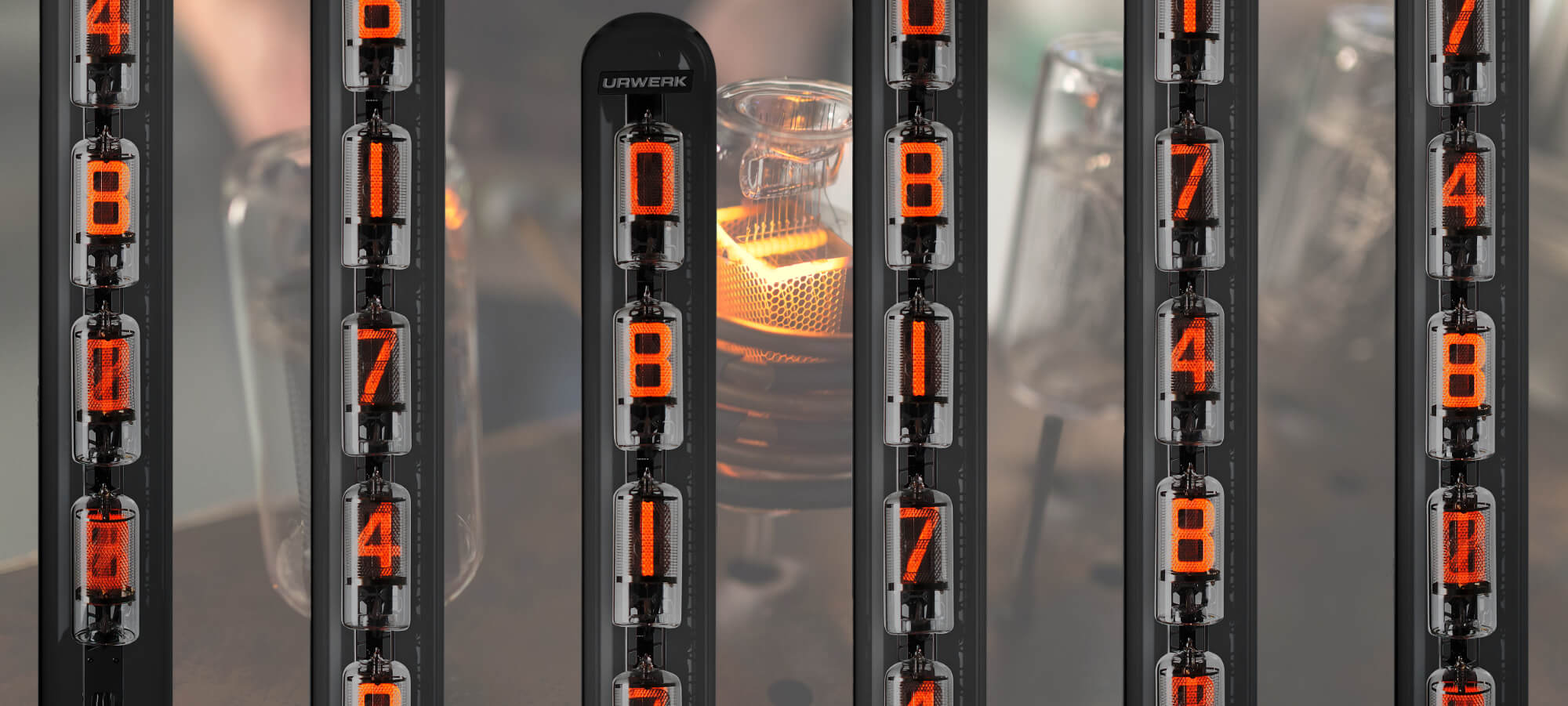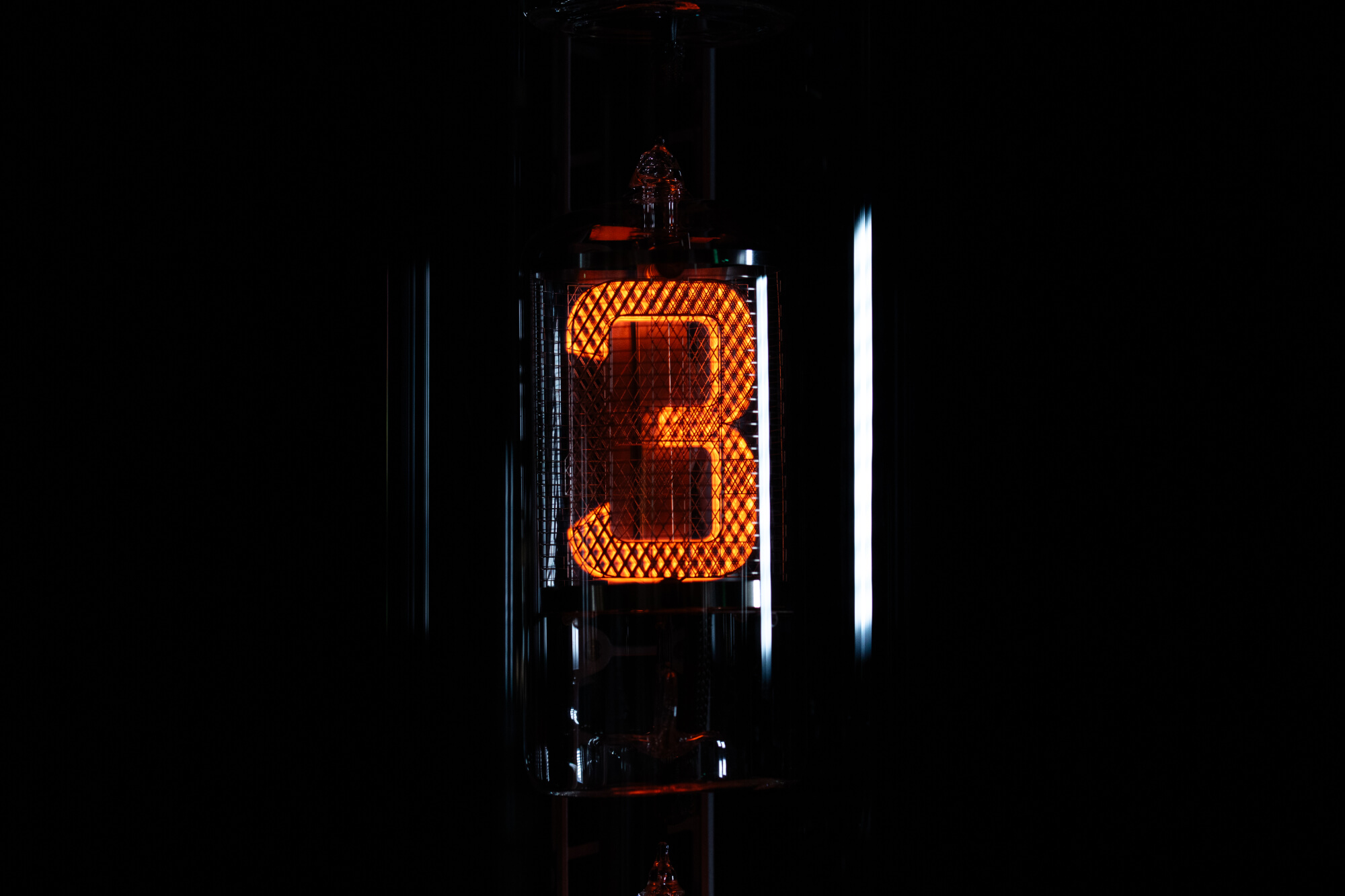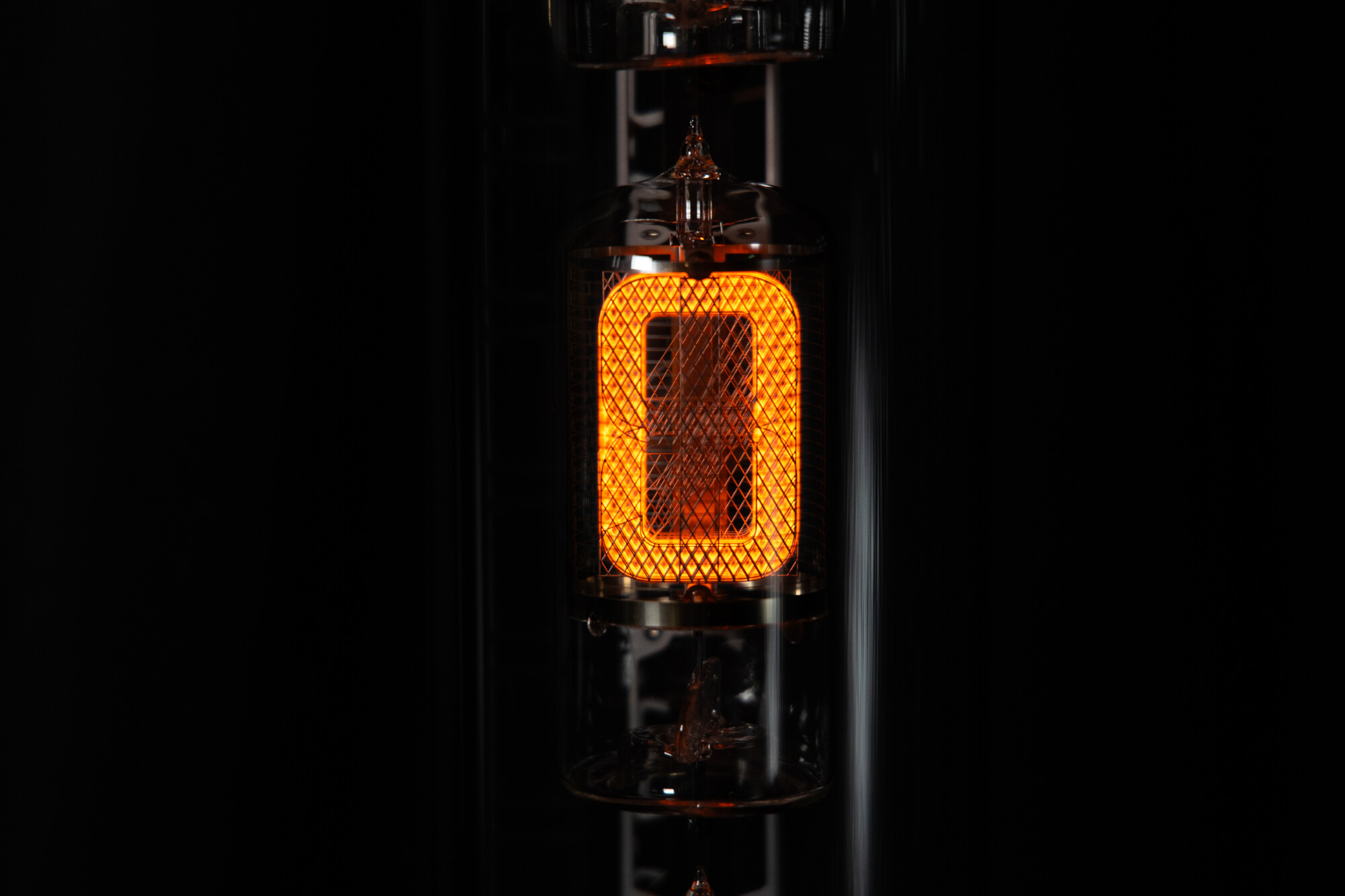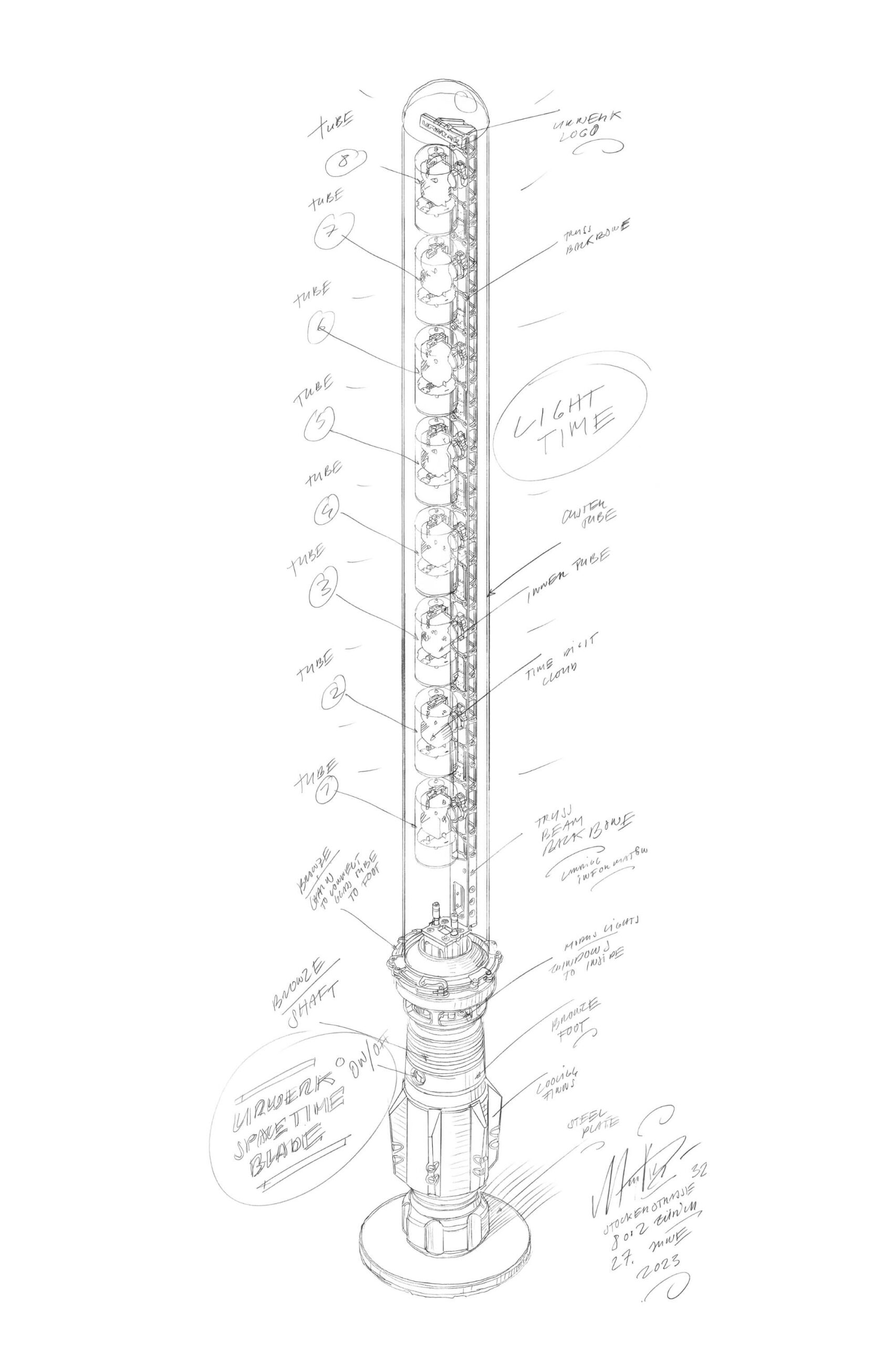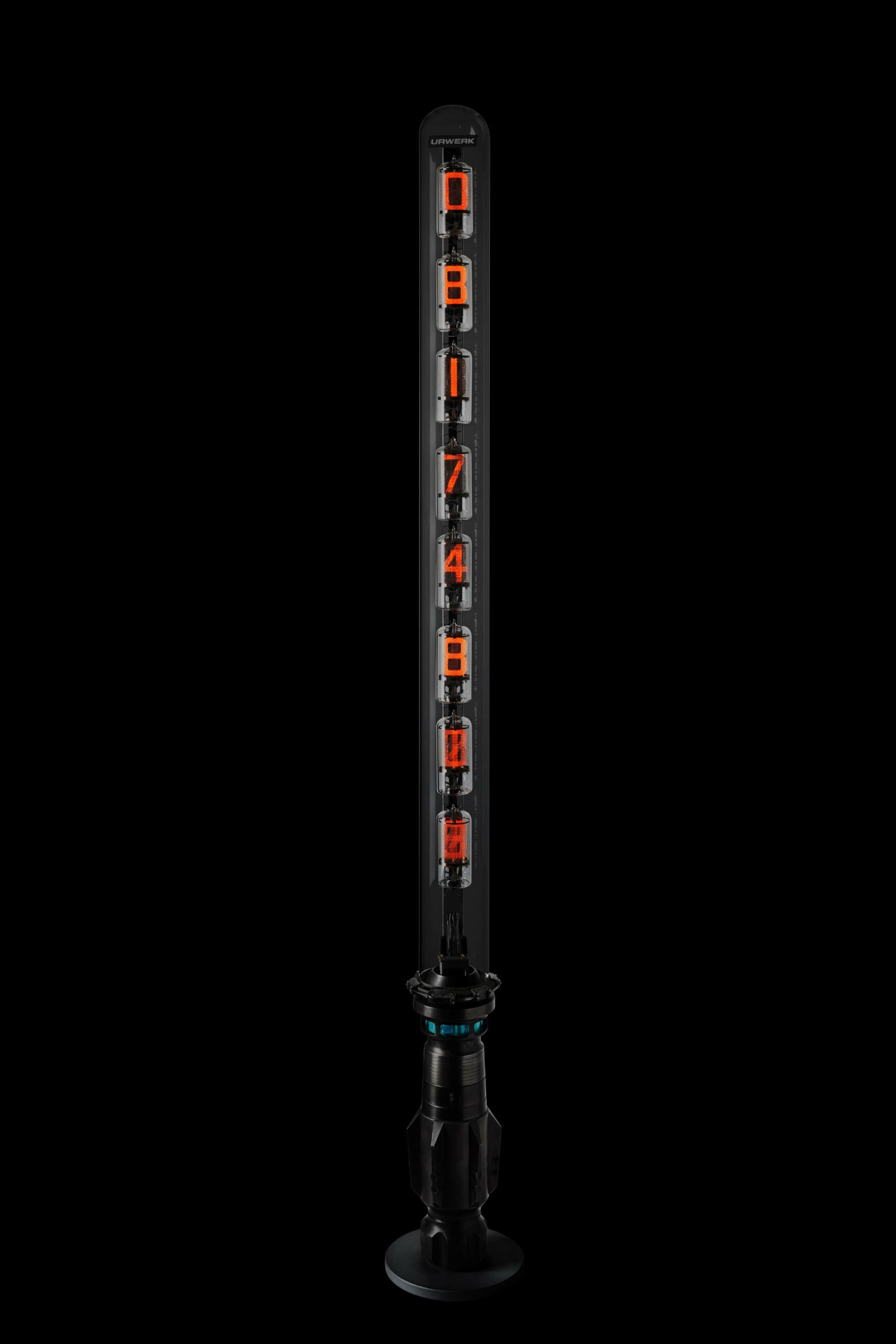
The Urwerk SpaceTime Blade clock concept was originally meant as a one-of-a-kind object to be sold at auction during the Only Watch 2023 event. Unfortunately, Only Watch 2023 never happened, which is a shame for participating brands like Urwerk and many others. Time[keeping] must nevertheless go on, and now the Geneva-based Urwerk brand returns with the SpaceTime Blade as an outstanding limited-edition standing clock at a price less than most of its wristwatches. Only 33 pieces of this nixie tube-based, linear limited-edition clock will be produced, offering enthusiasts a rare opportunity to enjoy a non-wearable Urwerk.
The SpaceTime Blade isn’t the first non-wrist watch Urwerk has produced. The Atomic Time “timekeeping chest” was the first one. The SpaceTime Blade is a bit more of a display object, better for audiences, and ironically a bit less nerdy to understand. In a nutshell, the clock stands 1.7 meters tall and is essentially a stack of eight nixie tubes within a larger cylindrical glass tube. The entire composition (as well as its remote control) is intended to look like a Star Wars universe lightsaber weapon. The clock is big, heavy, and entirely designed as a room centerpiece. No one seeing an Urwerk SpaceTime Blade will likely be able to resist spending ample time looking at it. Such is the power of the glowing large-size nixie tubes that make up its indication system.


The SpaceTime Blade clock is also very much a collaboration. Even though it was more or less designed by Urwerk, the brand worked with outside suppliers to make almost everything, including the glass, nixie tubes, and the dark-toned brass metal structure. Interestingly, the metal structure is produced less like a modern industrial object and more like traditional jewelry, using a wax mold-casting process. The entire SpaceTime Blade object reportedly weighs about 20 kilograms.
aBlogtoWatch has covered nixie tube-based timekeepers before, including other clocks and, recently, the Gelfman IN-16 nixie tubes wristwatch. What makes the Urwerk SpaceTime Blade different from the Gelfman (for example) is the use of brand-new versus vintage NOS nixie tubes. Nixie tubes were originally invented in the 1950s in the USA, as a numeric (mostly) display system prior to the advent of modern digital screens. The Soviet Union’s military and industrial infrastructure made liberal use of nixie tubes, and many of them (in all shapes and sizes) were produced up until the 1990s. The majority of nixie tube clocks and timekeepers until now have used unused or otherwise vintage nixie tubes for those applications. That’s not always enough for a luxury experience, especially when particularly large nixie tubes are called for. So Urwerk decided the best option was to use brand new nixie tubes produced for them by a niche company in the Czech Republic known as Dalibor Farny. They manufacture entire nixie tube timekeepers as well as the bulbs themselves. Using hand-blown glass and hand-assembling each tube one by one; according to Urwerk, each of the nixie tubes in the SpaceTime Blade is composed of 88 parts.

 The warm-colored bright glow of nixie tubes is a huge part of their appeal, and the SpaceTime Blade easily brings that magic to an entire room. What does the object actually do, though? Urwerk designed the SpaceTime Blade to cycle through eight different display modes:
The warm-colored bright glow of nixie tubes is a huge part of their appeal, and the SpaceTime Blade easily brings that magic to an entire room. What does the object actually do, though? Urwerk designed the SpaceTime Blade to cycle through eight different display modes:
- Position 1: Indication of the hours, minutes, and seconds
- Position 2: Indication of the hours, minutes, seconds, 1/10ths, and 1/100ths of a second
- Position 3: Indication of the day, month, and year
- Position 4: Indication of the Earth’s daily rotation expressed in km (measured at the Equator; counter over a period of one day)
- Position 5: Indication of the Earth’s revolution around the Sun expressed in km (counter over a one-day period)
- Position 6: Indication of the earth’s revolution around the Sun expressed in km (counter over a one-year period)
- Position 7: Shuffle mode
- Position 8: Pause mode
Positions 4-6 are how the object connects to “space,” as this is otherwise a highly terrestrial object. Information such as the earth’s current revolution around the sun is really just “fun data,” for the most part. However, you could easily imagine yourself in a room full of nixie tube indicators in a steampunk mission command center helping a vessel navigate its way through space. Such is the creative and imaginative power behind a brand like Urwerk and its colleagues.
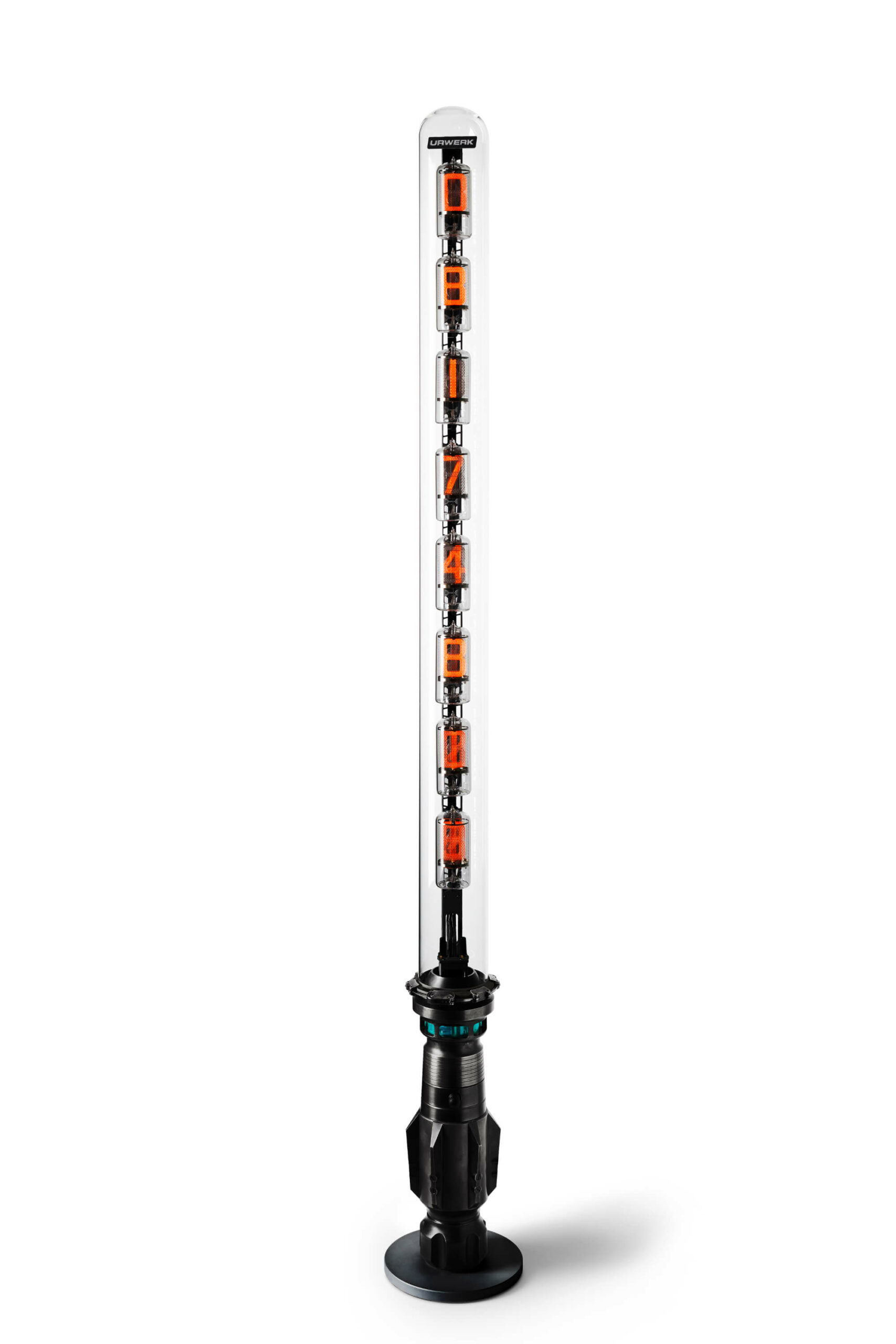
Even though nixie tubes are relatively old technology, they are all connected to modern computerized control boards, which makes using modern nixie tube clock devices rather snappy and reliable. Let’s just hope setting up the time and information on the Urwerk SpaceTime Blade is a simple process, or can be done nearly automatically by connecting it to the internet. I’ve yet to play with the device myself and will learn more about it when I meet with Urwerk soon to experience the SpaceTime Blade in person. Even though this is a luxury object, it is relatively affordable by Urwerk standards considering that many of its timepieces are priced at well over $100,000. The limited edition of 33 pieces Urwerk SpaceTime Blade nixie tube clock is priced at $63,000 USD. For more information, please visit the Urwerk website.

